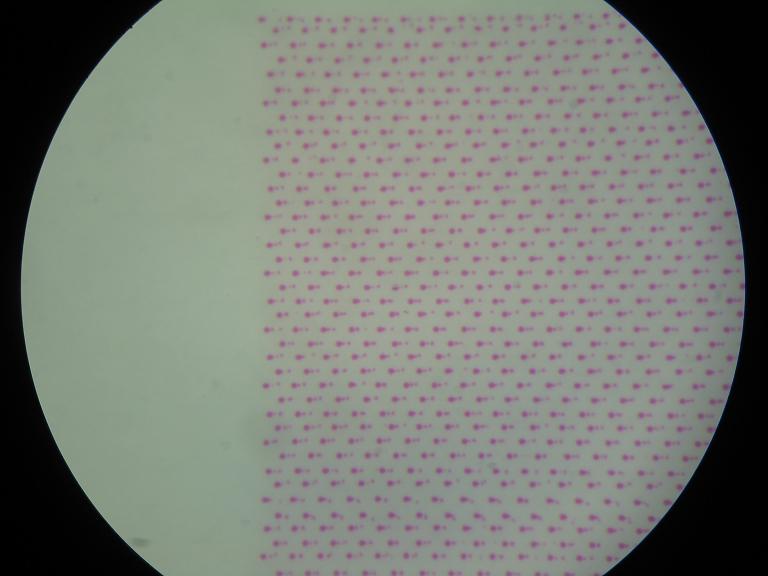- Thread starter
- #21
- Joined
- Jun 16, 2006
- Messages
- 3,645
- Reaction score
- 85
- Points
- 233
- Location
- La Verne, California
- Printer Model
- Epson WP-4530
I have wondered why the taped image looks so clean while the untaped one has so many extra small dots. There are three possible explanations that I can think of: one is that the taped nozzles are not as good as the untaped nozzles and have a tendency to break up the droplets into smaller ones like your animation shows in this post:
http://www.nifty-stuff.com/forum/viewtopic.php?pid=10550#p10550
Another possible explanation is that the interaction of droplets coming from two different sources at different times causes them to collide in mid air and break up.
And the third possible explanation that I can think of is that ejecting two dots at nearly the same location causes the second one to splatter.
I suppose I could tape up the other set of nozzles and see if it produces a clean set of dots to rule whether the first explanation is true or not.
I'm also going to take a look at my print head through the microscope today and see if that will help explain what's going on. If not, I'll try taping the other set of nozzles sometime this weekend.
http://www.nifty-stuff.com/forum/viewtopic.php?pid=10550#p10550
Another possible explanation is that the interaction of droplets coming from two different sources at different times causes them to collide in mid air and break up.
And the third possible explanation that I can think of is that ejecting two dots at nearly the same location causes the second one to splatter.
I suppose I could tape up the other set of nozzles and see if it produces a clean set of dots to rule whether the first explanation is true or not.
I'm also going to take a look at my print head through the microscope today and see if that will help explain what's going on. If not, I'll try taping the other set of nozzles sometime this weekend.


